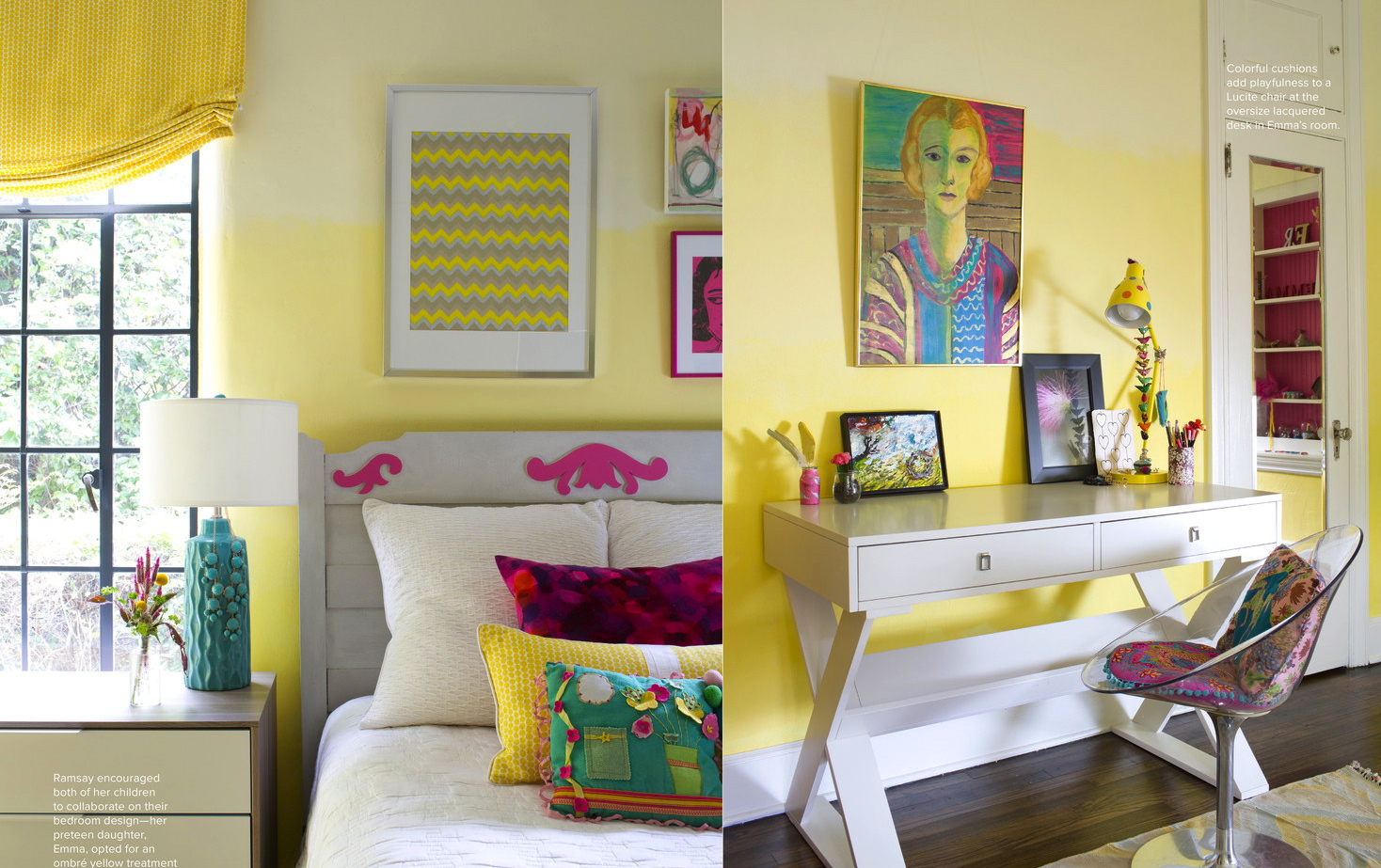
As many of you know I have been writing a column on another blog called Cloth & Kind which is the brainchild of a wonderful pair of designing women. Tami Ramsay, the half of the duo that lives in Athens, Georgia just had her lovely bungalow featured in Lonny Magazine. The entire house is just beautiful (take a look!), but I paused and returned to her children’s rooms as she has highlighted work by local artists in both of them. Real art too, not just kiddie stuff to fill the walls. Pieces that could travel into adulthood with them.
I’m a huge proponent of buying art for kids. Frankly, I’m a huge proponent of taking them to museums, in small bites at first, but slowly developing a sense of what interests them as well as giving them a chance to stretch their patience. I have a similar theory about art as I do about antiquing with kids, which is everyone gets interested when purchases get made. Art is horizon expanding, question provoking – whether representational or abstract – and a sense of ownership makes anyone, even children, more interested.
One of the strengths of this year’s CWAJ Print Show is the number of prints that will appeal to kids while having long-term lasting power – call it an investment – in their memory and decor. How amazing would it be to leave home and go off to your first home of your own and actually have some pieces with meaning to take with you? I’m using the Print Show to highlight this particular post, but it would hold true no matter where in the world you are. There are always artists and they are always making work.
The Print Show is full of sweet and obvious prints with childlike appeal, such as CLARK Kevin Lee’s Koinobori. You get Mount Fuji and the fish – two for the price of one – all in the same print. Traditional woodcut technique adds to this Japan memory print.
Nothing cuter than the Small Hairpins seen when little girls dress up in kimono for special days. OHTSUBO Kazue’s silkscreen will charm your daughter now and look wonderful as part of an art wall or in a powder room when she is older.
And SOMEYA Mayumi’s etching is just so cute I could eat it up. This could hang anywhere. Ageless!
But let’s talk about some of the less obvious choices. Instead of brightly colored alphabet blocks, what about learning your kana (Japanese letters) the old-fashioned way? ARAI Yuko’s I-RO-HA-ORDER is based around the traditional syllabary in which each character appears only once based on a 1000 year old Buddhist poem. Animals starting with each syllable help to illustrate the sound and the details grab attention.
GYOBU Fumi’s “P” of print studio–composition for an artist book has a similar graphic quality and is quite question provoking. What does the letter mean? Do the objects in the print start with that letter? Why are things upside down? I see endless questions yet there is nothing juvenile about the work at all.
Sometimes you need to be literal, but it doesn’t mean you can’t be subtle. Have you a little girl who loves ballet? KIRIZUKI Saki’s dramatic woodblock print Weightless Dance-g…
…or WATANABE Kanako’s Red Shoes 2 would satisfy that girlish interest, while their monochrome palette and dynamic woodblock technique give them long-lasting maturity. I bought Watanabe’s moody and mysterious print Road last year and it is hanging in my elder daughter’s bedroom now.
There is so much hidden fantasy in Japanese prints, particularly the monochrome mezzotints, etchings and lithographs with their fine details. Do you have one that loves to read? This lithograph from MISAKI Akihiro has the kind of surreal realism kids love to examine and if you look closely, there is a little hidden surprise. The artist had much the same idea; “The person might serve as a bookmark, who seems as if waiting for someone to open the pages. He is probably waiting to be freed. I hope this work of mine will free you into a world of imagination, as one usually does when travelling and visiting historical places. Old remains might undoubtedly inspire you and make you dive into a world of history.”
In NAGANO Junko’s It is Beginning to Tell the Story, the fantasy grows larger, much like the magical stag’s antlers do. It seems to me as if the reading boy’s imagination is driving the story forward, but that is my version of the tale. One of the things I remember loving as a child was searching images or wallpaper around my home and others for pictures, shapes and hidden images that would feed my imagination.
And what about the deep inky black tones of RISHO Shigeo’s aquatint? They make for a very mysterious castle.
Rather than a Disney icon, consider TOKITA Yuriko’s Infant of Margarita (bee). Your little princess may think of her as her princess picture now, but I guarantee she’ll love the reference back to Velázquez and Las Meninas later.
Quite a bit of Alice in Wonderland can be found this year. NEMOTO Kana’s garden–mushroom– provides a charming toadstool with a single bite taken out of it…
…while IKUTA Koji’s A Cat Called Alice is a picture play on the story.
No need to be limit oneself to black and white either. NISHIDA Tadashige’s The Town of Stars (6) Departure would satisfy any dreamer who longs to be an astronaut or play soccer in a giant stadium.
And can’t you see FUJIMOTO Keizo’s giant silkscreen Watch-BR anchoring a teenage boy’s room and then later, his first “man-cave” apartment?
And my hands-down favorite? It has to be newcomer ITO Ayami’s Tyrolean Japanese fantasy called Friends to Walk With. I love the charming floral design, the sweet mermaid and the seal, but mostly I am obsessed with that onigiri (rice ball) with its matching patterned nori (seaweed). Obsessed!

Prints and other works on paper tend to be eminently affordable. So think about birthdays and holidays and consider the difference between another toy, another dress, those things that are easily outgrown. And if you are in Japan right now, take the opportunity to visit the CWAJ Print Show.
Related Posts:
A Little Bit of Tat is a Good Thing…Tips on Antiquing with Kids
Artist Spotlight…58th CWAJ Print Show


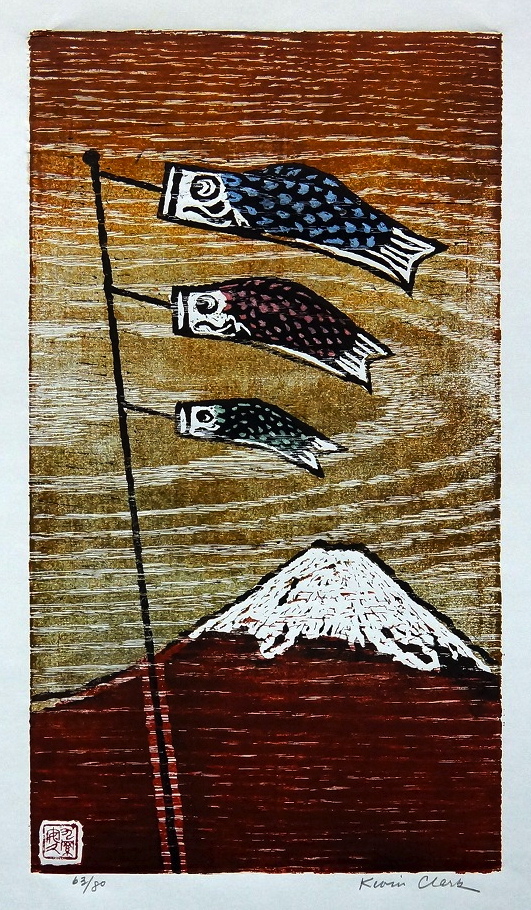
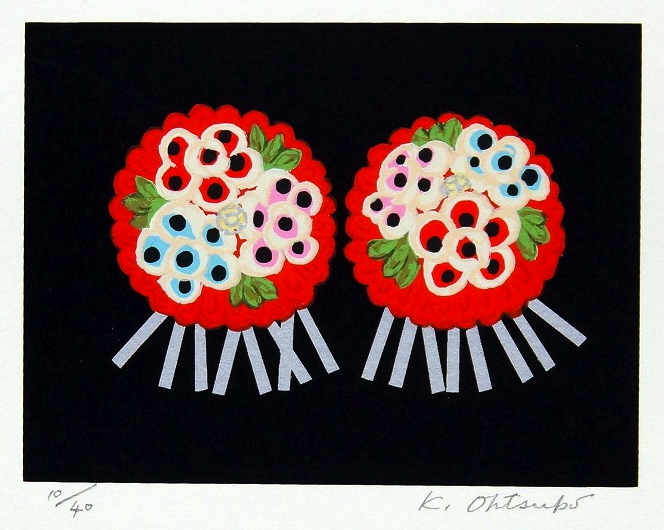

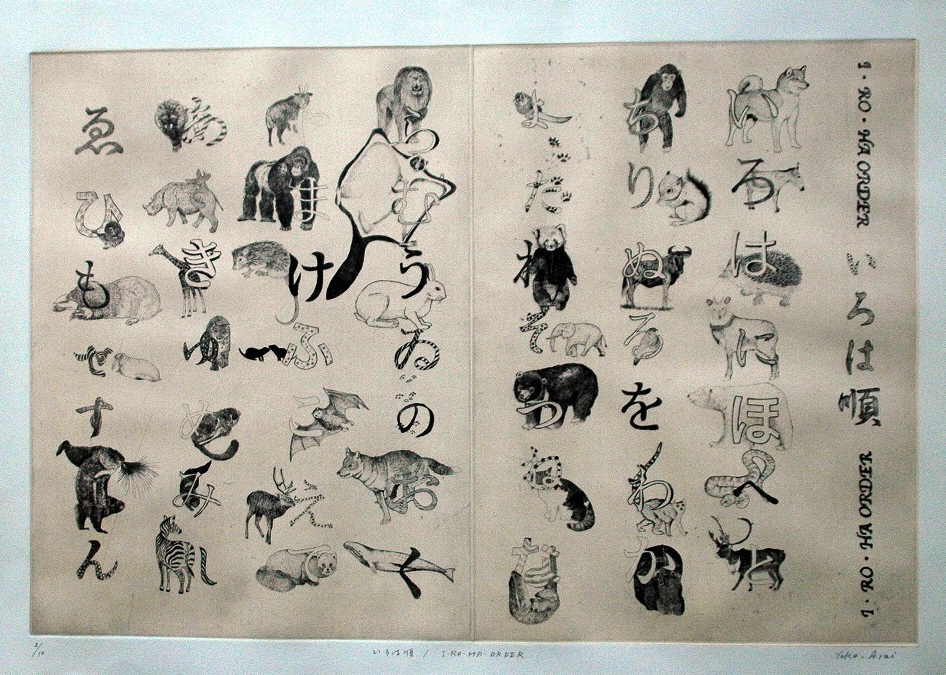
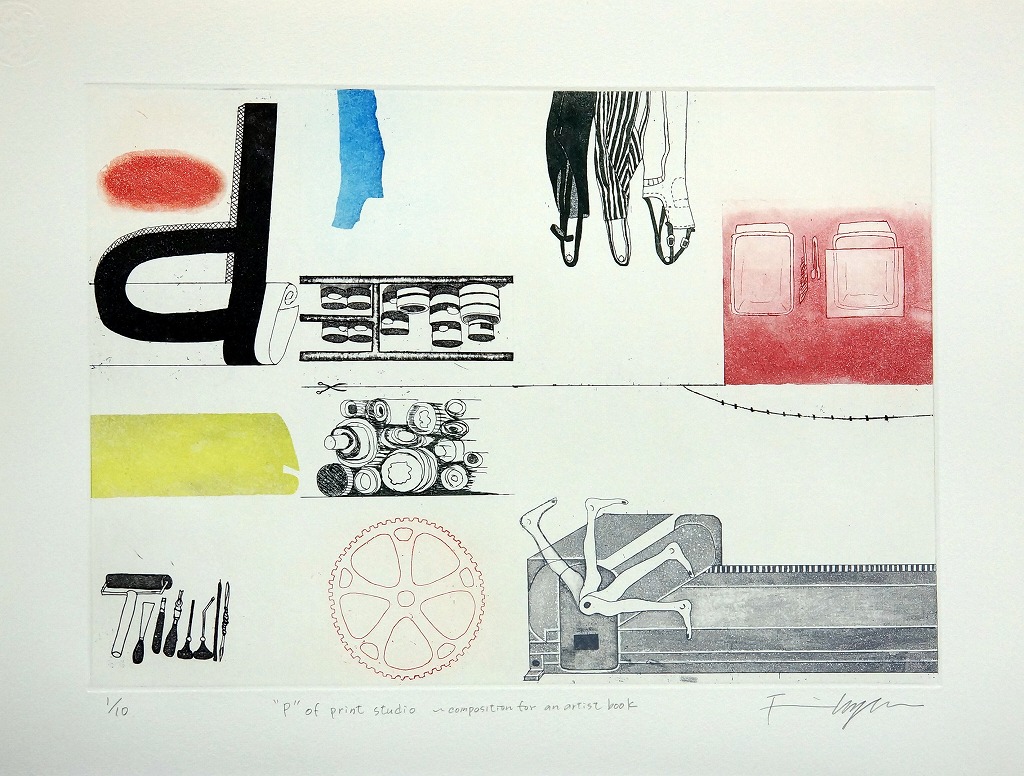




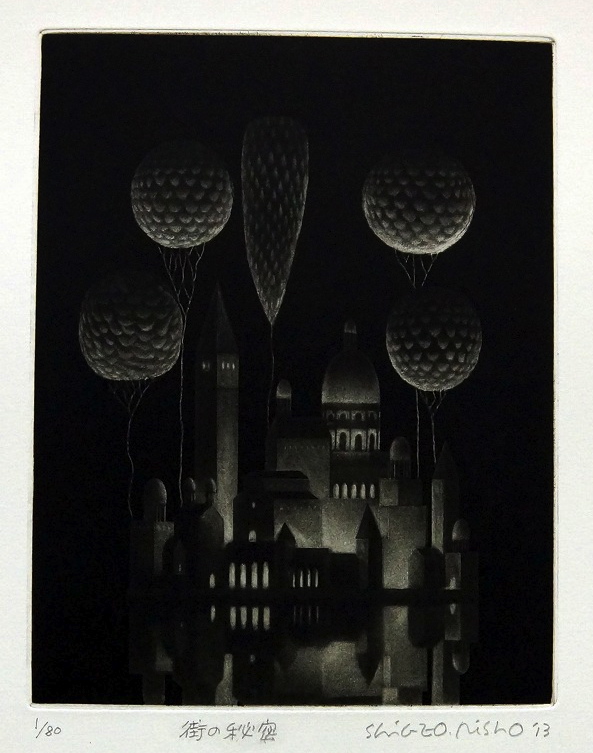
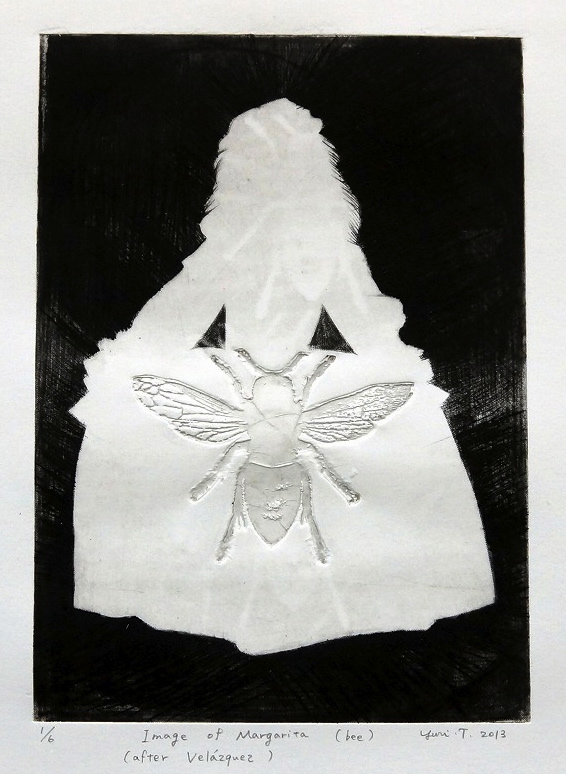
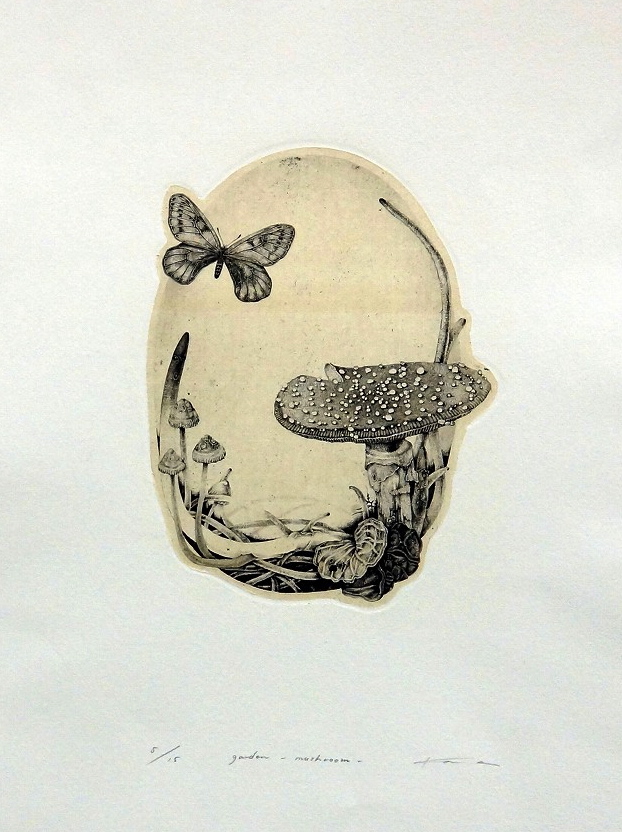
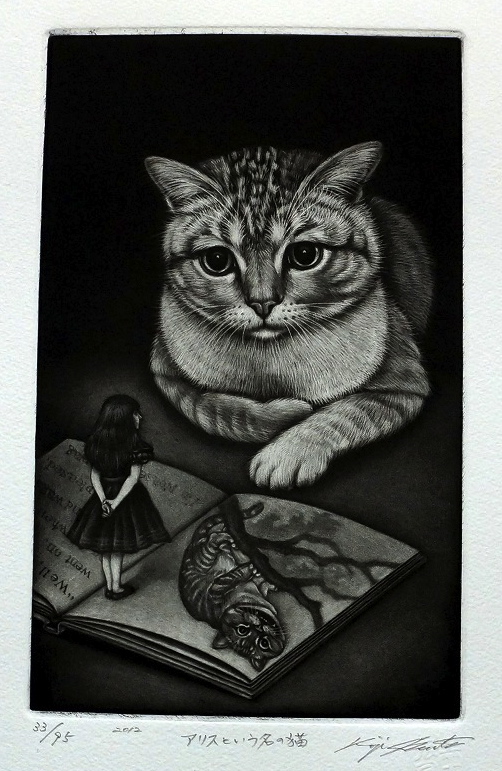


OK, Someya Mayumi’s boat etching is my favorite by far, but Risho Shigeo’s castle reminds me a bit of the Victorian house in the movie Up!
Yes! I never thought of that. And as you can tell, I love those little boats too!
NAGANO Junko’s “It is Beginning to Tell the Story” reminds me of Miyazaki’s tale Princess Mononoke! Fujimoto’s “Watch BR” is definitely a testosterone driven anchor.. maybe I speaking too personally..They are all awesome..! And furthermore- its hard not to obsess!
I have LOVED your last two posts. Check out prints by friend and former Eldridge Street neighbor April Vollmer (aprilvollmer.com). She specializes in mokuhanga.
Will do! Thanks for commenting!
HI,
Love some of these prints. Do you know if it is possible to purchase them from the USA?
Thanks & always enjoy your blog. Terry
Unfortunately there is no online purchasing, but I am so happy to have your comment as I have been pushing in that direction and it is good to confirmation of people’s interest. Thank you!
Hi,
I love reading your blog and was sad that you left Tokyo 🙁 But I love reading about your new adventures in Doha while still also including things on Japan.
I hadn’t read this post before going to the Print Show opening last night and I bought “Friends to Walk With” for my daughter room (she’s only 3)! I’ve actually purchased other original art for her before and agree that it’s never to young to start. I was really close to getting Tokita’s las meninas inspired print instead, but opted for the brighter colors.
Christina in Tokyo
They would look great hung together 🙂 Still time to go back!
And thanks for the lovely comment!
Thanks so much for including me in this post! I am catching up on blogs and was just shocked to come across this. You are such a wonderful cheerleader and it is really appreciated!
xo
tami
Hi to every body, it’s my first visit of this web site; this weblog contains awesome and genuinely
fine material in favor of readers.
The occurrence of a reduction of the insurance premium paid to the insurance
company as a result of a prompt-payment discount granted to the borrower.
Generally speaking, the amount of paperwork that is usually demanded during the initial mortgage application is virtually
cut in half during a streamline refinance. The citizen can stay in the house and get money during
his lifetime to pay his medical bills etc. If the address is uninsurable, the newly rehabilitated house will be a total loss to the person(s) flipping the property.
In case you have foreclosed your home loan, you will have
to wait for 2-3 years after the foreclosure date to apply for FHA loan.
Such gorgeous prints! I’m based in Tokyo and would love to find similar works. Do you have any tips on where to find similar items in Tokyo?